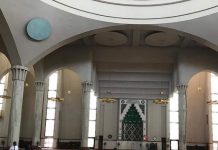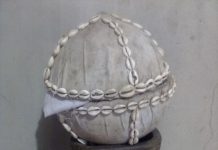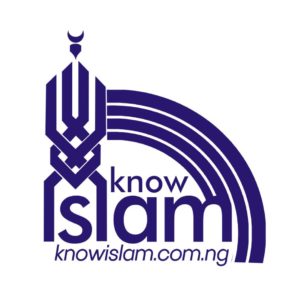UMAR MITA:FIRST MUSLIM TRANSLATOR OF THE QUR’AN TO JAPANESE

Umar Mita, the first Japanese Muslim translated the Holy Qur’an to Japanese language.
HIS BIRTH
Haji Umar Mita (His Japanese name is Ryoichi Mita) was born on 19 December 1892 in a samurai family in Yamaguchi, Japan. Since childhood Ryoichi did not possess a strong health or physique. His weak and ailing physical constitution caused delay in completion of his education. Therefore, at the age of 24, in March 1916, Ryoichi graduated from the Yamaguchi Commercial College, the forerunner of the present Yamaguchi University. Soon after graduation he proceeded to China, where he spend many years.
China was a very familiar name to Ryoichi because of the Sino-Japanese Wars in the mid-nineties of the last century and the Russo-Japanese Wars in the turn of the Present century. Ryoichi reared a dream for going to China all through his early youth. After graduating from college, he crossed over to China and there was his first contact with Islam.

HIS ARTICLE ON ISLAM
Ryoichi traveled through various regions of the Chinese mainland meeting people, learning the Chinese language and earning the experience of life. During those travels, his skills in the medical practice greatly helped him to strengthen the human contact. Specially through these personal contacts he started to know about the actual life of the Muslim, the Muslim way of thinking and the Muslim society. This opportunity could never be expected in Japan. Ryoichi became highly impressed by the lifestyle of the Muslims. In 1920, he wrote an article on “lslam in China” in a Japanese magazine called “TOA KEIZAI KENKYU”(Far-East Economic Research Journal Nos 1, 2, 3.)
Meanwhile, the first chapter of the history of Islam in Japan was opened by Haji omar Kotaro Yamaoka, who was the first Japanese Muslim to perform Hajj in 1909, accompanying Mufti Abdul Rashid lbrahim, a Turkish Muslim leader of Tartar origin who was then living in Japan.

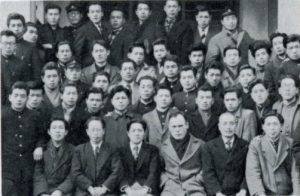

After returning to Japan in the following year, Haji omar Kotaro Yamaoka embarked upon a wide travel across the Japanese islands making lectures and holding discussions about his travel to the holy lands, thus introducing and
explaining Islam and the Muslim world. In 1912, Haji Yamaoka wrote and published a number of books on his journey through Arabia and on the grand spectacles of the pilgrimage of Haji in Mecca. Young Ryoichi, still a student, became highly impressed by the accounts regarding the Islamic lands contained in these books. Thus, it can be assumed that even before going to China Ryoichi had already acquired some background know1edge of Islam.
In 1921, Ryoichi Mita returned to Japan for a while. During his stay in Japan, he attended lectures as well as studied the writings of Haji Omar Kotaro Yamaoka. Then he met Haji Yamaoka for the first time in Kamakura near Tokyo, to learn more about Islam. At that time, Ryoichi Mita was 29 and Haji Yamaoka was 41. Ryoichi had not yet
formally accepted Islam although his heart was gradually turning toward Islam.
The year 1941 was the turning point in the life of Ryoichi Mita. Until then although for nearly 30 years he had known Islam, studied it, nurtured the fondness for Islam at heart, nay, although he was already a Muslim in his heart all through those years, he still did not embrace Islam formally. Maybe, this delay was due to the Buddhist religious tradition of a samurai family for generations, and his living environment up to that time was not quite favorable for a hasty change-over.
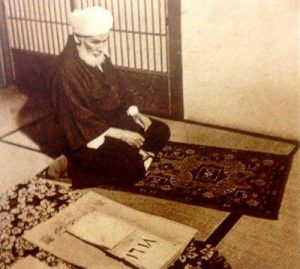
HOW HE FOUND ISLAM
When Ryoichi Mita was transferred to China, he decided to make his faith in Islam public. Therefore, he met Imam Wang Reilan of Nyuchie Masjid of Peking and under his guidance Ryoichi Mita formally declared his faith in Islam in 1941, received the name of umar, and became a dedicated servant of Allah. Thirty three years later, even today, Haji Umar Mita recalls that great moment with serene joy of fulfillment and also expresses his hearty gratitude for Imam Reilan for his kind and inspiring guidance during the days after Umar Mita’s formal declaration of faith.
Ryoichi Mita’s steps toward embracing Islam teaches us a very valuable lesson that it is not the preachings or observance of ceremonies but the love for humanity originated from the deep faith at one’s heart and the personal experiences that guide one to find out the way toward the truth. True, Ryoichi Mita was impressed by what Haji Omar Yamaoka had told. But unless Ryoichi Mita’s inner heart gave him the right direction, nobody’s preaching could change his mind. However, in the year of his declaration of faith, Umar Mita was 49 years old. In his occupational field he was assigned with the job of Counselor to the Supreme Council of the Federation of the Chinese Muslim Associations as a recognition of his vast, first-hand knowledge and experiences in the Chinese Muslim affairs and his close relations with the Chinese Muslims.
Umar Mita lived in Peking until the end of the wars in 1945 when he resigned from his official posts and returned to Japan.
Leaving behind his 30 years of long life in China, Umar Mita returned to his native Japan. After returning home he took up the job of teaching Chinese, first at the Kansai University in Osaka and then at the Kita-Kyushu University in the island of Kyushu. But after some time, he met with the disaster of losing his wife. Therefore, he gave up his teaching job in 1952 and settled in Tokyo and decided to engage heart and soul in the religious activities of Islam. A1most during this time, the Japanese Muslims who had so far been leading their individual Islamic life, established the Japan Muslim Association in cooperation with the foreign Muslims living in Japan.

In the meantime, during the 30 years period when Umar Mita had been deepening his faith in Islam while in China, Islam was steadily taking root in Japan. The forces behind this progress was the initiative of Haji Omar Yamaoka who had all along been strenuously working for the building up a foundation for Islam in this country through lectures and publications; the Japanese evacuees from the South-East Asian Muslim countries where they came under the influence of Muslims there and became Muslim during World War II: and the Turkish Muslim refugees who settled in Japan after leaving their home in the Soviet Union. ln fact, the last group of Muslims, that is, the Tartar refugees played a very important role in influencing the Japanese Muslims in their Islamic life. Through their earnest and enthusiastic efforts and with the cooperation of some other friendly Japanese, the first Masjid in Japan was established in Kobe City in 1935 and the second in Tokyo in 1938.
When Umar Mita came to settle in Tokyo in 1952, he was then 60 years old. In those days, the marks of war destruction of cities throughout Japan still remained. The life of the Japanese people was still in great distress, to say, it was extremely difficult for the common people to make both ends meet in respect of food, clothing and shelter. Even during this toughest of time Umar Mita chose to devote himself to the cause of Islam and to the learning of the Arabic language. He was always at hand when foreign Tabligh groups visited Japan and participated in all their works. In 1957,he went to Pakistan on invitation and undertook various journeys in connection with Tabligh activities in that country and had exchanges of thoughts with the Muslims of an out and out Muslim society. These journeys were not at all easy and safe, specially for the frail health of Umar Mita. In spite of that, God-fearing but undaunted Umar Mita continued his journey in the path of Allah. In 1958, joining with a Pakistani Pilgrims group he went to Mecca and fulfilled his life-long desire of Performing Hajj. After that, Umar Mita returned home and started his work with new vigor, In 1960, after the sudden death of Sadiq Imaizumi, first President of Japan Muslim Association, Haji umar Mita was elected its second President. During his term as President of Japan Muslim Association, he published his works: “ISURAMU RIKAI NO TAMENI”(Understanding Islam)and “ISURAMU NYUMON” (An Introduction to Islam) and “SAHABA MONOGATARI,” the Japanese translation of Urdu book HEKAYAT-E-SAHABA by Maulana Muhammad Zakaria and specially translated into English for Haji Umar Mita by the late Hafiz Abdur Rashid Arshad.
Exactly during this time, a new pocket book size Japanese translation of the Holy Quran was brought out by a renowned Japanese publisher and was circulated in a fairly large number. In this connection, it may be mentioned that three more Japanese translations of the Holy Quran were published in 1920, 1937 and 1950, respectively. A fourth translation from the origina1 Arabic was published in 1957. But all of these Japanese translations were rendered by non-Muslim Japanese scholars and obviously they lacked the Islamic stand-point. Moreover, the three previous ones were translated from English or other languages and more or less contained un-Islamic bias or absence of fairness. Therefore, Haji Umar Mita felt the need for a Japanese meaning of the Holy Quran prepared by a Japanese Muslim and from the original Arabic text. There was no other better person than Haji Umar Mita himself to undertake such a stupendous job. So he made up his mind to do the work himself. He was then 69 years old. He had the anxiety of his frail health and old age, but left the problem to Allah’s mercy.
In 1961, at the age of 70, Haji Umar once again left for Pakistan and, for a time, settled in Lahore to continue the work of translation, simultaneously, studying Arabic with the Arabic and Quranic scholars there. During this time, he established contact with Rabita-a1-Alam-al-Islami , Mecca, through the good offices of the late Hanz Abdur Rashid Arshad. On invitation, he visited Mecca and there he received pledge of support from the Rabita for the publication of the Japanese meaning of the Holy Quran. While staying in Saudi Arabia, he made wide contacts with the Quranic scholars of Mecca, Medina, Jeddah, Taif, Riyadh and so forth, and made considerable progress in his work. All through this work the inspiring guidance from the late Hanz Abdur Rashid Arshad is an unforgettable memory for him. Yet the more unforgettable event during his stay in Saudi Arabia was the death of Hafiz Arshad in a traffic accident. Haji Umar Mita was also traveling in the same car but somehow he was safe. In fact, that he survived and was able to return to Japan was a miraculous event in his life. This was in 1963 when Hafiz Arshad, Haji Mita and some other companions were proceeding to Mecca from Medina by car. When the car reached Badr, it met an accident and turned turtle. Hafiz Arshad died instantly. Haji Mita escaped death but received serious injury. In course of time, he recovered from the injury and the shock of the accident. The Rabita extended its most generous help and hospitality all through the time of treatment and recovery after the mishap.



After returning home, Haji Umar Mita continued treatment, at the same time, he also went on with his translation work. During this period, he sometimes lived in Miyazaki in Kyushu and sometimes in Enzan city in Yamanashi Prefecture, for the purpose of recovering health as well as doing his work in a peaceful atmosphere away from the din and bustle of the big cities. During his stay in Enzan, he met with Abu Bakr Morimoto, another stalwart of the Japanese Muslims, for the first time, in 1965. It was a happy occasion in that Haji Umar Mita felt relieved of anxieties regarding printing of the Japanese meaning of the Holy Quran by availing of the cooperation of a Muslim printing expert such as Abu Bakr Morimoto.
In 1968, the translation of the text was completed and its first revision was accomplished by a committee of revision and review, appointed by the Japan Muslim Association, after continuous study and review for about a year and a-half. Carrying the revised manuscript of the translation, Haji Umar Mita went to Mecca in June 1970, taking Brother Hussain Khan of Pakistan with him. At Mecca, the manuscript was again revised by a committee of scholars appointed by Rabita-al-Alam-al・Islami. After about six months of painstaking review, the work was finally came to the stage of printing. Haji Umar Mita then returned to Japan and the manuscript went to the printing press of Takumi Kobo Printing Company of Hiroshima, owned by another Japanese Muslim.
At long last, on 10 June 1972, the printing of the Japanese meaning of the Holy Quran was complete and its first edition was published after 12 years of painstaking and strenuous efforts of Haji Umar Mita who was then already 80 years old. Even after the publication, Haji Umar Mita has continued to write notes of the translation.
Although busily engaged all the time in the work of writing the meaning of the Holy Quran, Haji Umar Mita did never forget his other duties as Muslim. While performing his normal duties, he takes time out to guide the activities of the Japan Muslim Association as its Counselor. Even at this age of 81, he commutes from his home in the suburb of Tokyo, a two hours distance, to the Tokyo Masjid and to the Association’s office. This life pattern of Haji Umar Mita is really an example before the younger generation who are fortunate to receive his guidance regularly. In March 1974, he once again visited Mecca and in November of the same year, attended an Islamic conference held in New Delhi, India.
Haji Umar Mita became 82 on 19 December 1974. Let us pray to Allah for his long and healthy life so that his living example can inspire and guide the Japanese Muslims, now and in the future, to enable them to become worthy of carrying on his noble mission.
Credit: Muslimstories
Bashir Habeebullah @ knowislam.com


